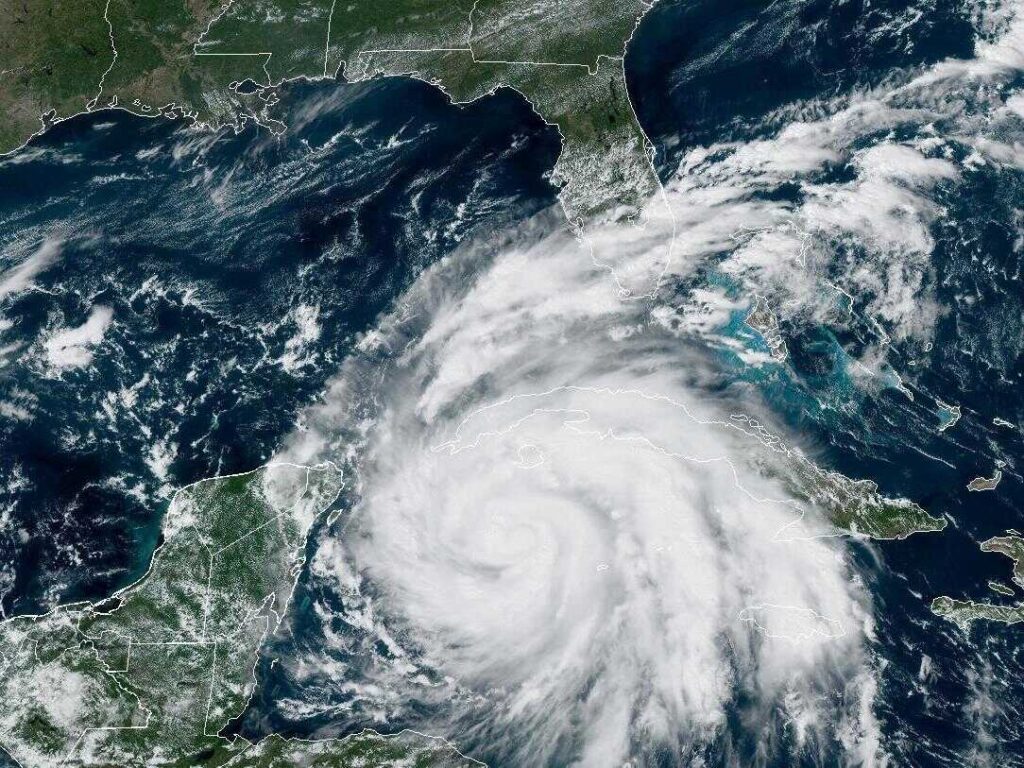Every climate zone offers unique beauty and wonder, but at the same time they each have their own challenges. Unfortunately, in many subtropical areas, hurricanes are one of the primary natural challenges that we face. While there are many things to do inside your home to prepare, there are also some practical things to do in the garden before a hurricane. So, whether you are new to food forest work or this all all “old hat” for you, perhaps this checklist will help you remember a few things as you prepare your garden and yard for a potential hurricane.

- Remove hanging flower pots and take down wind chimes and hanging bird, feeders, and decorations. Walk through your yard a few days before and just start taking down anything that’s hanging. Once you think you have it all, come back after a few hours and walk through again to double check everything.
- Turn over bird baths and lay on the ground.
- Bring patio furniture and umbrellas into a garage or shed. If you don’t have an indoor place, secure them to poles or against the house. Tables should always be turned over.
- Secure kids play items. This includes removing trampoline covers and tops, or turning them over and putting bricks on top. Bring smaller plastic playhouses into the garage or secure in place.
- Select prune trees with large leaves. These large leaves are going to get ripped to shreds anyway, and would usually take down the tree – so prune before the wind hits. To give them their best chance, cut bananas back to one leaf. Or even cut papaya to the trunk. We recommend this with things like banana, papaya, canna lily, etc.
- Harvest annual flowers, sunflowers, decorative plants, etc. Save seeds from varieties that have already bloomed like Jamaican sorrel, cranberry hibiscus, butterfly pea, etc. Better to save seeds and have some to restart next year incase you need it as insurance.
- Use large T-post stakes to tie up younger fruit trees. Always use straps – never rope. Rope will cut and damage the bark. These can be removed after the storm has passed to allow the tree trunk to strengthen naturally.
- Roll up awnings, close available window shutters, and move your car out from under tree branches or store vehicles in a garage. RV’s can be strapped to the ground or to nearby trees to hold in place.
- Harvest fruit that is “close” to being ripe and bring indoors. This should be done just before the storm, just in case the weather changes. Many times the forecast will change even as the storm is coming in.
- Make sure your water catchment and drainage systems are ready. Be prepared to watch the water flow on your site so you can adjust later. During the storm, look for problematic areas where you need to divert water flow at a later time through swales, French drains, etc.
- Prepare to have dogs and cats brought indoors. Have some herbal or natural calming meds ready for dogs before the storm begins. Calming aids should be given an hour before the storm arrives and then as prescribed there after. Play soft music or turn a TV on for the animals to help drown out the noise.
- Secure livestock and animals. Bring appropriate animals inside barns or shelters when available. Remember, animals like cows and horses are not necessarily native here. They are not built for this. Utilize dog crates and kennels for smaller animals (chickens, quail, ducks, etc.). This may need to be done the night before when animals are calm, and then they are kept inside the 24 hours prior to the storm. Dim lighting will help keep animals calmer.
- Don’t “panic buy” from the grocery store. Have enough of your weekly items, but don’t stock up and short someone else. Fill a few extra jugs with water and freeze them. That way if the power goes out, you have the ice to keep things cool and water to melt and drink.
- Check on your elderly neighbors, single parents, or shut-ins to see if they need help. Do not assume that just because they have family that they are ok. Consider using phrases like, “What is something I can do for you this afternoon to help you prepare for the storm?” Or if it’s an elderly person, just let them know that you are bringing over a frozen meal for them the day before and afterwards. Bring them over some of the flowers you cut from the garden as a way to connect and then see how you can help them prepare. Text them during the storm again to check in on them. Be the change you want to see in the world around you.
- Have a good book, candles, and some extra snacks on hand. Don’t spend the storm worrying. Have a nice cup of tea or glass of wine and enjoy the adventure. Stay calm and take pictures along the way. Tag @permacultureFX on social media with your storm prep pics so together we can help inspire others to prepare with wisdom.
We’ll see you in the garden again…after the storm!
Please follow and like us:
